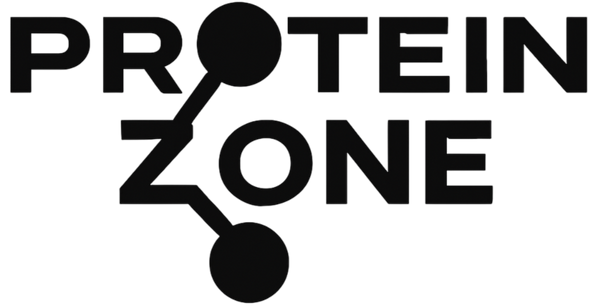NAD+ Complex
Every cell depends on nicotinamide adenine dinucleotide (NAD+) to shuttle electrons and keep energy flowing. Though isolated and named in the last century, its role is as old as life. Traditions that prized vigor—fermented foods, hearty broths, colorful plants—unknowingly supported the same metabolic webs that modern biochemistry maps in detail today.
This formula delivers NAD+ with quercetin and resveratrol, two polyphenols associated with cellular housekeeping and antioxidant defense. Together they support clean energy production, balanced stress responses, and the quiet maintenance work that keeps tissues performing. The intention is not stimulation but steadiness: a well‑tuned engine that meets the day without undue strain.
These statements have not been evaluated by the Food and Drug Administration. This product is not intended to diagnose, treat, cure, or prevent any disease.
Purchase NAD+ Complex HERE
DETAILED INGREDIENTS LIST
NAD+ (NICOTINAMIDE ADENINE DINUCLEOTIDE) (500 MG)
Introduction & History:
NAD+ is a vital coenzyme found in all living cells. It was first discovered in the early 20th century during fermentation research and has since been recognized as central to cellular energy metabolism. Levels of NAD+ decline naturally with age, sparking interest in supplementation as a strategy for supporting healthy aging.
Molecular Function & Mechanism:
NAD+ plays a dual role as a coenzyme in redox reactions and as a substrate for signaling enzymes. It is essential for ATP production through glycolysis, the tricarboxylic acid (TCA) cycle, and oxidative phosphorylation. It also supports DNA repair and cellular stress resistance via sirtuins and poly(ADP-ribose) polymerases (PARPs). Maintaining optimal NAD+ levels is associated with improved mitochondrial function and cellular vitality.
Modern Use & Theory:
NAD+ supplementation is used to promote energy metabolism, support cellular repair pathways, and enhance resilience to age-related metabolic decline.
QUERCETIN DIHYDRATE EXTRACT (SOPHORA JAPONICA) (WHOLE FLOWER BUD) (250 MG)
Introduction & History:
Quercetin is a flavonoid widely distributed in fruits and vegetables. Sophora japonica, also called the Japanese pagoda tree, is a traditional source of concentrated quercetin. The flower buds have been used in Eastern medicine for vascular and anti-inflammatory support.
Molecular Function & Mechanism:
Quercetin is a potent antioxidant and anti-inflammatory compound. It scavenges free radicals, stabilizes mast cells, and inhibits enzymes involved in inflammatory pathways. It also modulates cellular signaling and gene expression, supporting vascular health, immune regulation, and metabolic balance.
Modern Use & Theory:
Quercetin is taken to support immune defense, reduce oxidative stress, promote vascular integrity, and enhance cellular resilience.
JAPANESE KNOTWEED EXTRACT (98% RESVERATROL) (POLYGONUM CUSPIDATUM) (ROOT) (150 MG)
Introduction & History:
Japanese knotweed (Polygonum cuspidatum) is a traditional medicinal plant and one of the richest natural sources of resveratrol. Standardized extracts provide high concentrations of the bioactive trans-resveratrol isomer.
Molecular Function & Mechanism:
Resveratrol is a polyphenol with strong antioxidant and signaling properties. It activates sirtuins, enhances mitochondrial function, and modulates nitric oxide production for vascular health. It also helps regulate inflammation by influencing NF-κB signaling.
Modern Use & Theory:
Resveratrol extracts are used to support cardiovascular health, cellular protection, and healthy aging.
HPMC (VEGETABLE CAPSULE)
Introduction & History:
Hydroxypropyl methylcellulose (HPMC) is a cellulose-derived compound developed as a vegetarian alternative to gelatin capsules.
Molecular Function & Mechanism:
HPMC forms stable, inert capsule shells that dissolve readily in the digestive tract, delivering active ingredients without affecting their stability or absorption.
Modern Use & Theory:
Used to produce vegetarian-friendly capsules that ensure safe, consistent delivery of supplement contents.
MICROCRYSTALLINE CELLULOSE (MCC)
Introduction & History:
Microcrystalline cellulose is a purified, plant-derived form of cellulose widely used in supplements and pharmaceuticals.
Molecular Function & Mechanism:
MCC acts as a binder and filler, ensuring uniform distribution of ingredients and structural stability of capsules. It is inert and not absorbed by the body.
Modern Use & Theory:
Included to maintain capsule consistency and ensure accurate dosing without impacting the activity of active compounds.
BROWN RICE FLOUR
Introduction & History:
Brown rice flour is produced by milling whole rice grains and has been used as a food ingredient for centuries.
Molecular Function & Mechanism:
In supplements, it functions as an excipient, adding bulk to capsules and helping ensure consistent weight and volume. It is hypoallergenic, gluten-free, and easy to digest.
Modern Use & Theory:
Used primarily as a natural filler in capsules, ensuring even distribution of active ingredients without altering their function.
OLIVE OIL
Introduction & History:
Olive oil, pressed from Olea europaea fruit, has been valued for thousands of years in Mediterranean diets and medicine.
Molecular Function & Mechanism:
Rich in oleic acid and polyphenols, olive oil supports cardiovascular health and antioxidant defense. In supplements, it is often used as a stabilizer or carrier for fat-soluble ingredients.
Modern Use & Theory:
Olive oil enhances bioavailability of active compounds and provides secondary cardiovascular and antioxidant benefits.
SILICON DIOXIDE
Introduction & History:
Silicon dioxide, or silica, is a naturally occurring compound commonly used in supplements for decades.
Molecular Function & Mechanism:
It acts as an anticaking agent, preventing powders from clumping and ensuring smooth capsule production. It is inert and passes safely through the digestive system.
Modern Use & Theory:
Used to maintain product stability, consistency, and manufacturing quality.
MAGNESIUM STEARATE
Introduction & History:
Magnesium stearate is a compound of magnesium and stearic acid. It has long been used in food and supplement production.
Molecular Function & Mechanism:
It functions as a flow agent, preventing powders from sticking to machinery during encapsulation and ensuring accurate filling of capsules.
Modern Use & Theory:
Added in very small amounts for manufacturing consistency and quality control, without affecting the bioactivity of nutrients.
